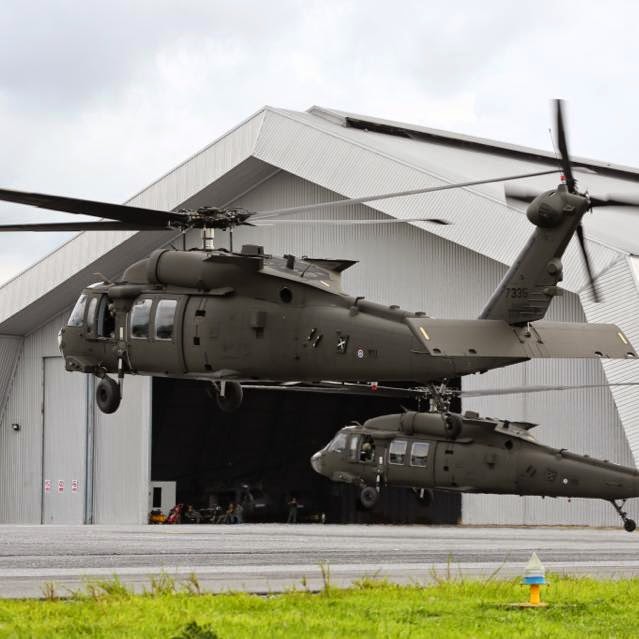Optimizing Security: Crucial Upkeep Tips for Your UH 60 Helicopter
Optimizing Security: Crucial Upkeep Tips for Your UH 60 Helicopter
Blog Article
Navigating Uh 60 Helicopter Regulations and Conformity Demands

Regulatory Structure Review
The governing structure controling UH-60 helicopter procedures incorporates a complicated collection of standards and rules established by air travel authorities. These regulations are designed to make certain the effective and risk-free procedure of UH-60 helicopters in different atmospheres. The Federal Aviation Administration (FAA) plays a main function in establishing and enforcing these laws, which cover a variety of operational facets, consisting of airworthiness standards, pilot qualifications, upkeep needs, and operational treatments.
Conformity with these policies is important for helicopter operators to preserve the highest degrees of security and operational stability. Failure to stick to these policies can result in severe consequences, consisting of mishaps, injuries, and governing permissions. Helicopter drivers must remain informed concerning the most recent regulative growths and make sure that their procedures are in full compliance with all appropriate guidelines and standards.
Airworthiness Directives and Inspections
Amidst the regulatory structure controling UH-60 helicopter operations, an important emphasis exists on conformity with Airworthiness Directives and performing comprehensive evaluations to maintain security standards and operational dependability. Airworthiness Regulations (ADs) are provided by air travel authorities to deal with risky conditions in aircraft, including the UH-60 helicopter, and mandate certain activities to be taken by owners or operators. Compliance with Advertisements is mandatory, and failing to stick to these regulations can lead to major repercussions, consisting of grounding of the aircraft.
Regular inspections are critical to ensuring the airworthiness of UH-60 helicopters. These inspections incorporate a variety of checks, from routine daily inspections performed by pilots prior to and after flights to more comprehensive set up maintenance evaluations accomplished by licensed auto mechanics. Additionally, unique examinations might be required based upon certain conditions or events. By sticking to a strict examination program, operators can find and deal with prospective issues immediately, thus boosting the security and reliability of UH-60 helicopter operations.
Pilot Qualifications and Training

Pilot training for UH-60 helicopters is detailed and covers a vast array of subjects, including airplane systems, emergency situation procedures, navigating, and mission-specific training. Furthermore, pilots go through simulator training to exercise various emergency situation my company situations in a controlled setting. Find Out More This training assists pilots establish the necessary abilities to manage difficult circumstances properly.


Furthermore, ongoing training and expert advancement are essential for UH-60 pilots to remain present with the most up to date regulations, modern technology, and ideal techniques. By purchasing pilot credentials and training, drivers can improve security, maximize efficiency, and ensure conformity with regulative demands in the operation of UH-60 helicopters.
Operational Limitations and Requirements
Pilot credentials and training function as the structure for comprehending the functional constraints and demands associated with UH-60 helicopter operations (uh 60). These functional restrictions are implemented to guarantee the safety of the crew, travelers, and the aircraft itself. Functional restrictions may consist of factors such as climate conditions, weight restrictions, elevation constraints, and operational limits. It is important for pilots to be fluent in these constraints to make enlightened choices during flight procedures. Furthermore, conformity demands, such as sticking to specific trip courses, communication methods, and emergency situation procedures, are necessary for keeping functional security and regulative compliance. Pilots need to remain existing with all operational restrictions and requirements via routine training, rundowns, and assesses to reduce threats and ensure secure and reliable UH-60 helicopter operations. By focusing on adherence to these functional guidelines, pilots can improve the general safety and performance of their missions Read More Here while promoting regulative standards.
Emergency Situation Procedures and Compliance Testing
Reliable emergency situation treatments and complete conformity testing are essential components of maintaining operational safety and security and regulative adherence in UH-60 helicopter procedures. Emergency situation treatments encompass methods for different situations, consisting of engine failures, fires, hydraulic concerns, and much more. Pilots and crew members have to be skilled in these procedures to react quickly and effectively in emergencies. Regular compliance screening makes certain that the helicopter satisfies all governing needs established forth by aviation authorities. This screening involves comprehensive evaluations, checks, and analyses to confirm that the airplane is airworthy and in conformity with all relevant policies.
Additionally, compliance testing may include simulations of emergency situation circumstances to analyze the team's action and the helicopter's performance under tension. By focusing on emergency procedures and conformity screening, UH-60 operators can minimize threats and show their dedication to safety and governing conformity.
Conclusion
Finally, adherence to regulative framework, conformity with airworthiness directives, pilot qualifications and training, operational restrictions, and emergency procedures are crucial for navigating the laws and needs of operating a UH-60 helicopter. uh 60. It is crucial for drivers to focus on safety and security and make certain complete conformity with all relevant laws to maintain the airworthiness and functional honesty of the aircraft
Browsing the regulatory landscape bordering UH-60 helicopter procedures requires a nuanced understanding of the detailed web of rules and conformity demands.Conformity with these policies is vital for helicopter drivers to maintain the highest possible levels of safety and functional integrity.In the middle of the regulative structure controling UH-60 helicopter procedures, a crucial focus exists on conformity with Airworthiness Directives and performing detailed examinations to support safety standards and operational dependability.Reliable emergency procedures and comprehensive conformity screening are vital components of preserving operational safety and security and regulatory adherence in UH-60 helicopter operations. Regular conformity testing makes certain that the helicopter fulfills all regulatory requirements set forth by aviation authorities.
Report this page